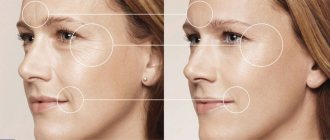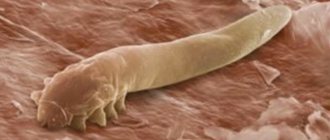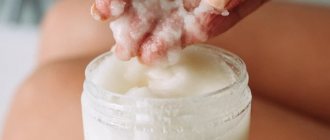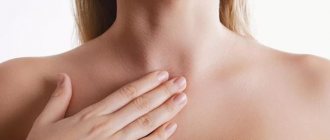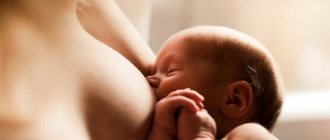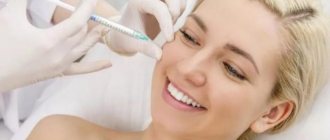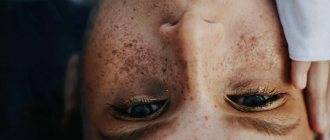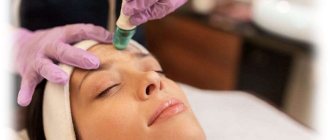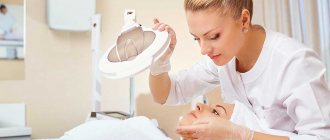Types and causes of rosacea
Congenital rosacea manifests itself:
- when the immune system is disrupted, when pathogenic microorganisms enter the body and release a substance that dilates blood vessels and capillaries;
- rosacea may appear as a result of congenital Rond-Oslan disease (when the walls of the capillaries relax);
- Very often, vascular weakness is inherited genetically from close relatives.
BIO PHYTO PEELING
Bio Phyto Peeling is all-season. It can be done at any time of the year. The preparations for this procedure are based on a unique combination of medicinal herbs, alpha and beta hydroxyl acids, a vitamin complex, which exhibit biological activity, participating in the mineral and lipid metabolism of the skin, regulating tissue permeability. Simultaneously affects the skin in 6 directions:
- Improves blood circulation, resolves infiltrates. Promotes uniform distribution of blood in vessels and removal of microthrombi from them. Performs “gymnastics” of blood vessels. Gives good results for pale, “tired” skin.
- Enhances epithelization and regeneration. Due to active skin renewal, slight peeling may occur.
- It has a cooling effect and narrows dilated capillaries.
- Deeply cleanses skin pores and regulates the function of the sebaceous glands.
- Has a pronounced antibacterial and soothing effect.
- Saturates the skin with vitamins.
Indications for the Bio Phyto Peeling procedure:
- pale, tired face
- defects in skin texture and color
- oily, dry seborrhea
- acne, post-acne
- premature aging
- pigmentation
- rosacea (“spider veins”)
- increased skin sensitivity
Contraindications to the Bio Phyto Peeling procedure:
- herpes and other skin diseases
- allergic reactions
- high blood pressure
- intolerance to certain cosmetic components
- 6-12 hours after solarium
- inadequate psychological state
Bio Phyto Peeling contains various vitamins and microelements that have a beneficial effect on the condition and nutrition of the skin. Here are some of them:
Vitamin A - regenerates the skin, improves its immunity and prevents the formation of wrinkles; Vitamin E - has antioxidant properties, due to which the level of inflammatory processes is reduced, cell membranes are strengthened, cellular respiration is stimulated, thus slowing down the aging process of the skin; B vitamins - promote wound healing and skin regeneration; Vitamin F - moisturizes the skin, effectively affects the processes of tissue nutrition and restoration of the lipid barrier.
Acquired rosacea
This type occurs:
- when climatic conditions change, when the cold first dilates deep-lying vessels and increases blood pressure in them;
- chronic hypertension can also cause the development of rosacea;
- taking hormonal drugs that dilate capillaries;
- excessive consumption of alcohol, which first causes vasospasm and then dilates them;
- Long exposure to the sun leads to damage to the skin and blood vessel walls.
IONOPHORESIS
Iontophoresis in cosmetology is carried out with the aim of transporting ions under the skin. This is done due to a low-power galvanic current; it does not damage the dermis and does not cause a violation of its integrity. Iontophoresis not only helps to introduce medicinal substances into the dermis without injections, but also removes dead cells and impurities of various natures.
The impact of the procedure is expressed in the following changes:
- Launch and revitalization of local metabolic processes.
- Increased vascular and muscle tone.
- Improving blood supply to tissues and blood flow.
- Increased skin permeability.
Iontophoresis in cosmetology solves many problems of various nature. Indications for the procedure are very varied:
- Signs of early aging.
- Disturbance of water balance in the dermis.
- Cellulite, local fat deposits.
- Accumulation of waste and toxins.
- Puffiness and bags under the eyes.
- Blackheads, enlarged pores, increased sebaceous secretion.
- Reduced skin tone, loss of elasticity.
- General signs of skin fatigue (uneven texture, dull color, etc.).
- Nutrient deficiency in the off-season.
- Scars from mechanical damage to the skin or acne.
- Dark spots.
It is also possible to perform iontophoresis for hyperhidrosis; it is believed that the procedure, although it does not completely solve the problem, significantly improves the situation.
Before the procedure, you must ensure that there are no contraindications. Iontophoresis is not performed when:
- Individual intolerance to electric current.
- Presence of pacemakers.
- The presence of metal implants in the affected area.
- Pregnancy.
- Oncology.
- Chronic skin diseases, foci of inflammation in the problem area.
- Hypertension.
- Infectious diseases, reduced immunity and fever.
- Lesions of the endocrine system.
- Chronic diseases of the heart, blood vessels, internal organs in the acute stage.
- Epilepsy and nervous disorders.
If the technology of the procedure is followed, it is safe for human health. Before undergoing the procedure, you must consult a dermatologist.
Stages of rosacea
Couperosis first appears with slight redness of the skin, burning, and itching. The disease then develops as follows:
- redness of the skin becomes persistent;
- the skin dries out and stars appear;
- skin inflammation does not go away.
What are the possible side effects from lasers and light treatments?
Redness is common after treatment. This usually disappears within 2 weeks. You may also see a rash of purple or red spots. They also usually go away within 1-2 weeks. During treatment, some patients experience skin tightness, itching, or pain. In skillful hands, scars are rare. While sun protection instructions may seem unnecessary, sun protection is really important. Stay out of the sun and protect your skin from sun damage to prevent permanent scars.
Cuperosis
How to treat rosacea
Some cosmetic procedures help get rid of rosacea
- Mesotherapy is a procedure in which a vitamin cocktail consisting of amino acids is injected into the site of skin lesions.
- Hardware technique. The face is lubricated with a cream containing medicinal substances, and the drug is injected into the deep layers of the dermis.
- Biorevitalization is a procedure that helps restore skin hydration using hyaluronic acid.
NON-INJECTION CARBOXYTHERAPY
It is a technique for saturating the skin with carbon dioxide. This skin rejuvenation technique is based on the use of carbon dioxide. Recently, subcutaneous injection of medical carbon dioxide into the skin has become extremely popular. However, today more and more women prefer non-injection use of this substance. Thanks to the session, it is possible to maintain the integrity of the skin, which makes the procedure safer.
This procedure is usually prescribed for the following indications:
- normalization of skin tone and texture;
- providing a lifting effect, combating photoaging and biological aging of the skin;
- elimination of acne and changes on the skin after it;
- restoration of the epithelium after the use of damaging techniques;
- therapy of rosacea and vascular pathologies on the skin;
- muscle strengthening;
- fight against scar changes;
- fight against swelling;
- reduction in the number of wrinkles, as well as the degree of their severity.
- In addition, with the help of carboxytherapy, it is possible to increase the effectiveness of cosmetic procedures, especially chemical peeling.
Despite the universality of the procedure, a number of contraindications still exist:
- Chronic neuralgic diseases.
- Acute inflammatory processes.
- Mental disorder.
- The period of gestation and feeding of the child.
- Thrombophlebitis.
- Diseases of the heart, kidneys and lungs.
- The use of carbonic anhydrase inhibitor drugs.
If you have one of the above diseases, the procedure will need to be postponed until complete recovery.
Avoid Potential Pathogens
These include spicy food, alcohol, very high and very low temperatures, stress, and some skincare products.
How can you determine which pathogen is causing your exacerbation? In this case, experts advise keeping a journal in which it is worth noting the change in condition, as well as what influenced it. Unfortunately, not all triggers can be avoided. Washing with cool water and using special anti-rosacea cleansers can relieve the flare-up. It is better not to use a scrub, as it can worsen the situation.
PLASMOLIFTING
This is a cosmetic procedure during which active substances are injected under the patient’s skin. The peculiarity of this effect is that the patient’s own blood plasma acts as the active components. To do this, from 20 to 100 ml of blood is taken from him and plasma is separated from it in a special centrifuge. The process itself consists of injecting it under the skin of the face to a depth of 3 mm. This promotes the activation of stem cells and overall rejuvenation of the facial skin. This method is suitable for those who are afraid of exposure to chemicals and the associated negative consequences; here everything is natural and natural, done in the presence of the patient. Storage of such a drug is excluded; new blood is taken at the next session. To achieve maximum effect, 4-5 sessions are usually required, but the exact number can be determined by the doctor, it all depends on the severity of the case and the result the patient wants to get.
The break between sessions is on average 2 weeks, during which time the face has time to rest and the plasma has time to begin its beneficial effects. Possibilities of plasma Blood plasma has unique properties, thanks to it the body's stem cells are activated, metabolism improves and, as a result, the condition of the skin significantly improves, it becomes much younger and fresher. The effect can last quite a long time, but over time the procedure must be repeated.
Plasmolifting differs from other methods in cosmetology in that it is absolutely safe and does not cause allergies or other side effects. The effect of the procedure is not only long-lasting, but also increasing and can last for several years. This method of treatment involves a certain amount of pain, and this scares many; in fact, the sensations are quite tolerable. The result will show itself in 8-10 days, when the plasma shows itself in all its capabilities.
Among the main indications for a course of treatment using plasma therapy are:
- age-related changes;
- pale or unhealthy skin color;
- sagging, excessive dryness or oily skin;
- skin laxity due to weight loss;
- acne;
- consequences of excessive use of solarium;
- the presence of wrinkles, including deep ones.
Like any method of treatment, this also has its contraindications:
- pregnancy at any stage;
- lactation;
- inflammatory or infectious diseases;
- oncological diseases of any form and stage, even predisposition to them;
- hepatitis of any form;
- blood diseases;
- taking blood thinning medications;
- HIV; other viral diseases.
The result after a course of treatment, which usually lasts 5-6 sessions, will not be noticeable immediately. You need to wait 8-10 days for the injected plasma to start working. As a result, the skin noticeably brightens, wrinkles become less noticeable, and in some cases disappear altogether, and acne disappears. A positive result usually lasts 1.5-2 years.
Rosacea Treatment Methods
Dermatocosmetologists have a large number of different methods of treating this disease at their disposal.
To obtain a lasting clinical result, our clinic’s specialists use a combination of several methods of therapy, including medicinal (drugs) and “local” (ointments and gels).
Modern non-drug methods for treating rosacea include cryotherapy with liquid nitrogen, photo- and laser destruction, and destruction of blood vessels using a high-intensity broadband light source IPL systems.
One of the promising modern methods of treating rosacea, which has shown high efficiency, is plasma therapy (the use of autologous plasma with a high platelet content).
Hydration
People with rosacea should have a moisturizer in their skincare arsenal.
Dermatologists advise using it daily, as moisturizing helps create a blocking barrier that prevents symptoms and irritation from appearing. However, you should take the choice of cream seriously, as the wrong product can worsen the situation. When choosing, you need to pay attention to the composition: it should not contain oils and fragrances, and on the packaging you should look for the “hypoallergenic” label. According to experts, the fewer items there are, the better.
Drug treatment for rosacea
Treatment of rosacea with antibacterial drugs For these purposes, tetracycline drugs, macrolides (erythromycin and azithromycin) and inidazoles (metronidazole) are used. It should be noted that all antibacterial drugs are used orally and for a long time (up to about 2 months). Treatment with antihistamines Among the main antihistamines, their representatives of the 3rd and 4th generations are widely used. Such medicines can be used both in tablet form and in the form of ointments. Antihistamines for rosacea are often used in combination with hardware and other treatment methods. Additionally, during periods of exacerbations, steroidal anti-inflammatory drugs are prescribed along the way.

